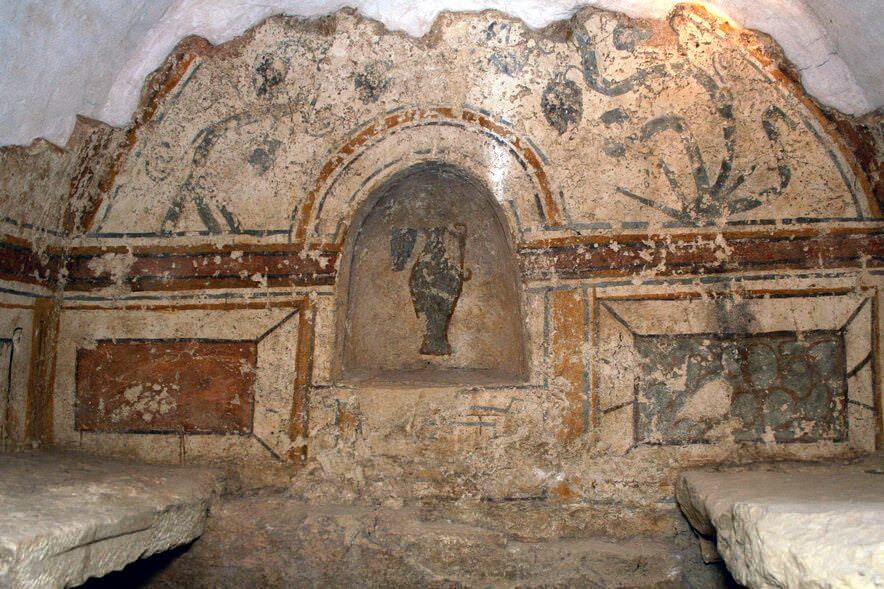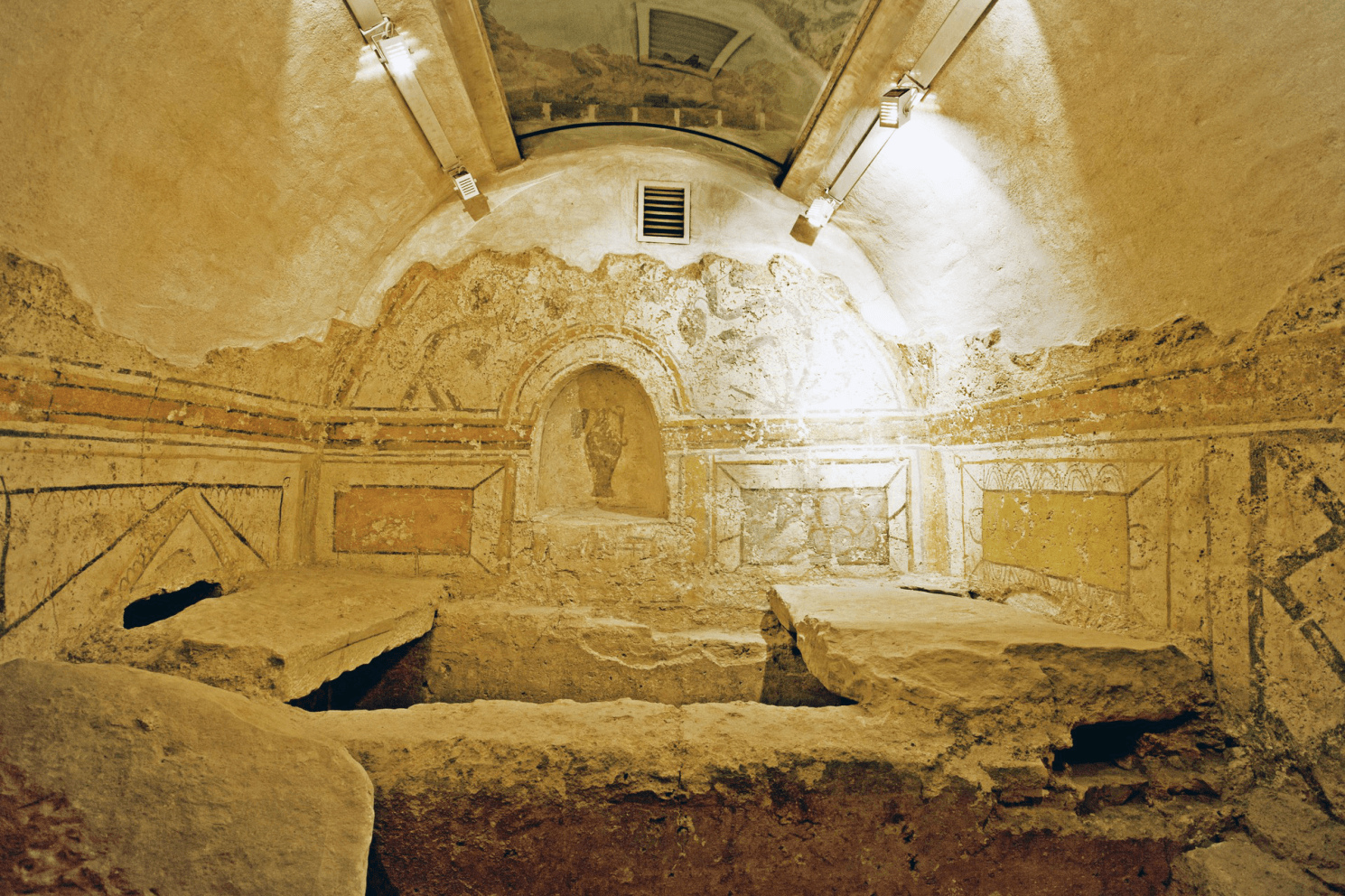Pécs, Dóm tér 23, 7621
When you arrive in the visitor area in front of the tomb, you are actually below the Roman ground level. Opposite, the entrance to the burial chamber was once accessed via a sloping shaft from the level above (roughly the same as the Roman external walkway). The small model opposite the entrance to the burial chamber, which reconstructs a terraced entrance, has been surpassed by research. Looking into the tomb, one can see the jar and cup for which the tomb is named.

Entering the interior of the chapel, the remains of the original flooring can still be seen in the corners near the entrance. It can be seen that although it had a brick floor, it was made of broken bricks. Unfortunately, the dome of the tomb, decorated with geometric patterns, has collapsed, so that we can get a better view of the tomb from above. In front of the niche in the north wall, across the entire width of the tomb, is a huge brick-walled tomb, with only the lid made of flat blocks of stone. In a later burial, a new sarcophagus was built in front of this one, thus filling the entire interior of the tomb. Only the remains of this sarcophagus can be seen along the side walls, but it can also be seen that it was built in front of the pattern of the grid on the side walls, i.e. when it was already complete - presumably by the time of the first burial.
A common question is what are the "channels" under the sarcophagi. An opening can be seen on the west wall, above the lid of sarcophagus No. 1. The cemetery was once not a terraced, artificial surface as it is today, but was dissected by (intermittent) depressions in watercourses. In fact, there is now a natural drainage channel (the shaft of which can be seen from the outside, in the square above the burial chamber). It is probable that the chamber was occasionally flooded during heavy rainfall, so that it was necessary to drain the water as soon as possible.


